RV Water Heater Reset Button: 6 Tripping Reasons Explained
Has your RV water heater reset button malfunctioned recently? Knowing the reasons behind the real issue will save you from potential headaches. Moreover, this will ensure you can enjoy your camping adventures to the fullest.
For getting the best insights, read on to learn the various types of RV heaters and how to access their location. Also, follow the step-by-step instructions to reset the water RV heaters comprehensively. Let’s get started!
Table of Contents
A Glimpse Into The RV Water Heater
An RV hot water heater is an essential component supplying warm water to the plumbing system in recreational vehicles, allowing users access to it for various purposes., including:
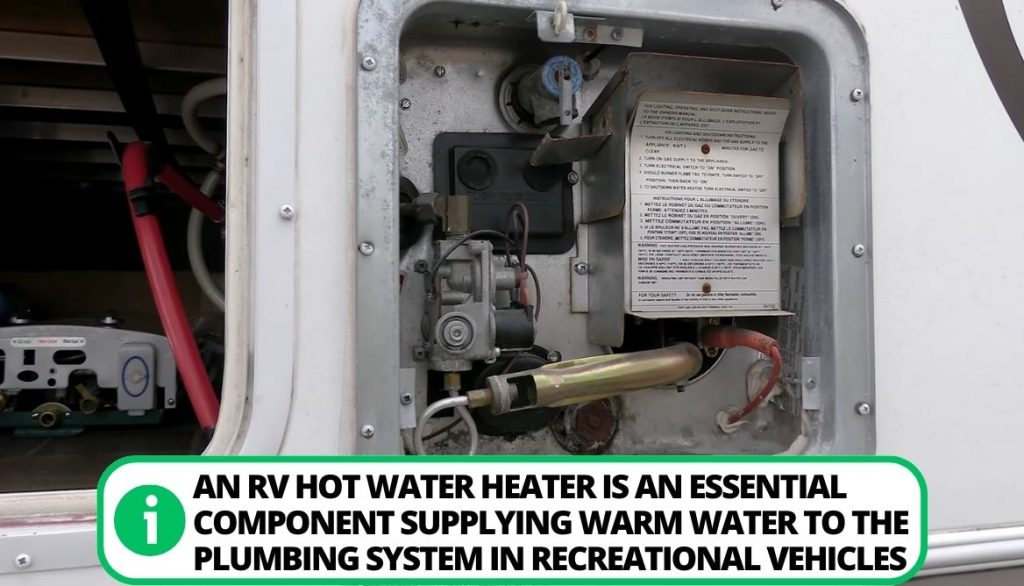
- Handwashing,
- Dishwashing,
- Hot Shower.
Water RV heaters are designed to operate using different energy sources, typically propane, and electricity. Propane-powered heaters utilize a burner and a gas supply to heat to the water.
On the other hand, an electric water heater relies on an electric power source to heat the water which includes a generator or shore power hookup.
Now, let’s move on to the most known types of heaters used in RVs.
Two Types Of Water Heaters You Should Know
Understanding the various kinds of water heaters can have a big impact on how relaxed and satisfied you are when traveling. The two major categories of RV water heaters are discussed below.
1. Water Heaters Without Tanks
Tankless water heaters, which provide a constant flow of hot water, are installed in some RVs. They don’t store hot water as tank-based heaters; rather, they instantly heat the water as needed. This suggests that you can have as long and as soothing of a shower as you like without worrying about running out of hot water.
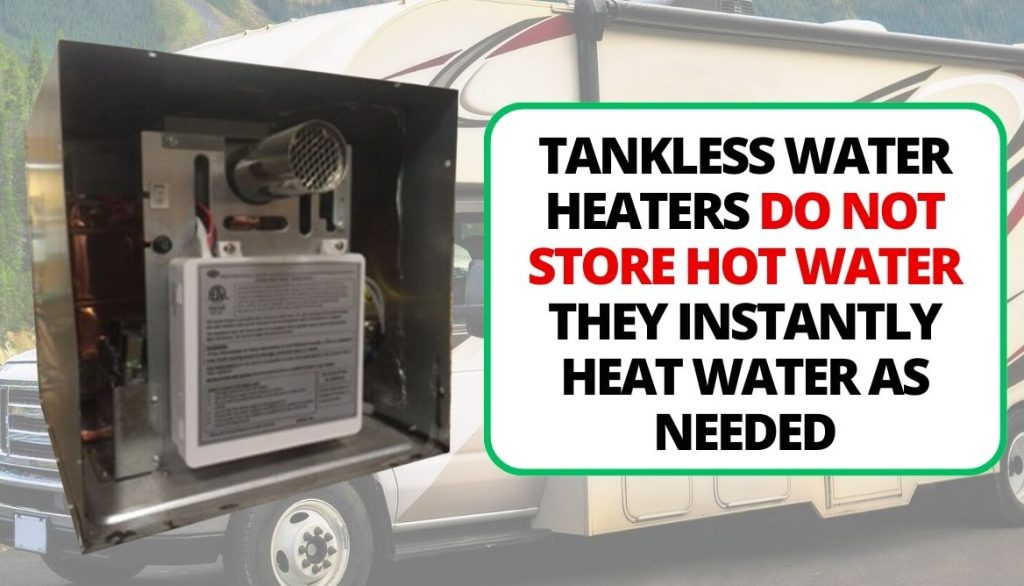
2. Tank-Based Water Heaters
RVs commonly come equipped with tank-based water heaters that store hot water in a reservoir. The size of the tank varies depending on the RV’s size and type, generally falling within the range of 6 to 10 gallons.
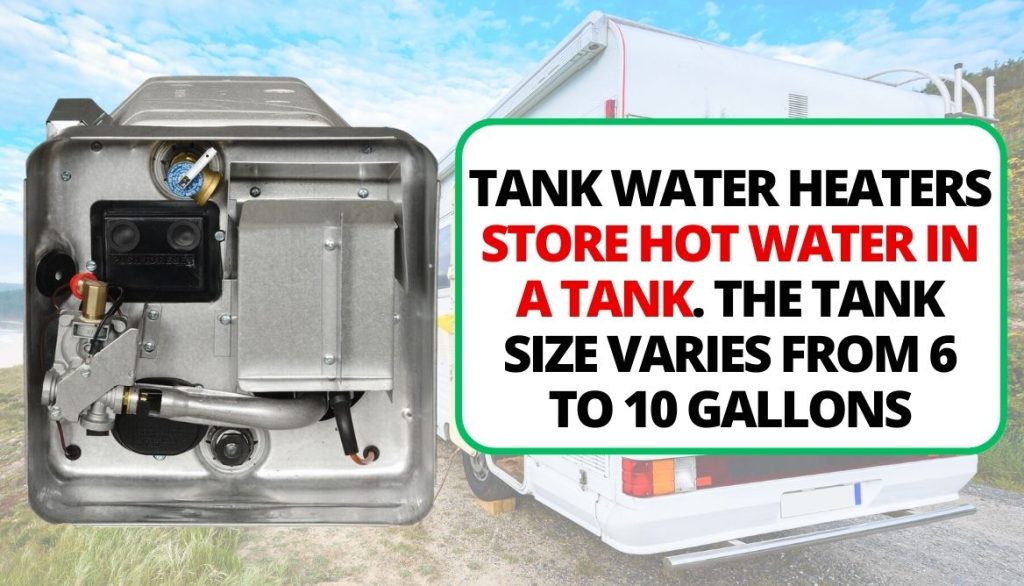
Although these heaters provide the advantage of readily available hot water, they come with certain limitations like difficulty in managing temperature, etc.
A Quick Overview Of Important Facts
The availability of hot water with tank heaters is limited. When the water in the tank is depleted, you must wait while the heater warms up fresh water. You may find this waiting period inconvenient, especially if you need hot water for important tasks like dishwashing or taking a shower.
Now, that you are well aware of heaters, let’s dive into things related to resetting.
A Guide for Finding the Reset Function on RV Water Heaters
The process of resetting an RV water heater varies depending on the model because not all devices have reset buttons and even those that sometimes have them in odd places.
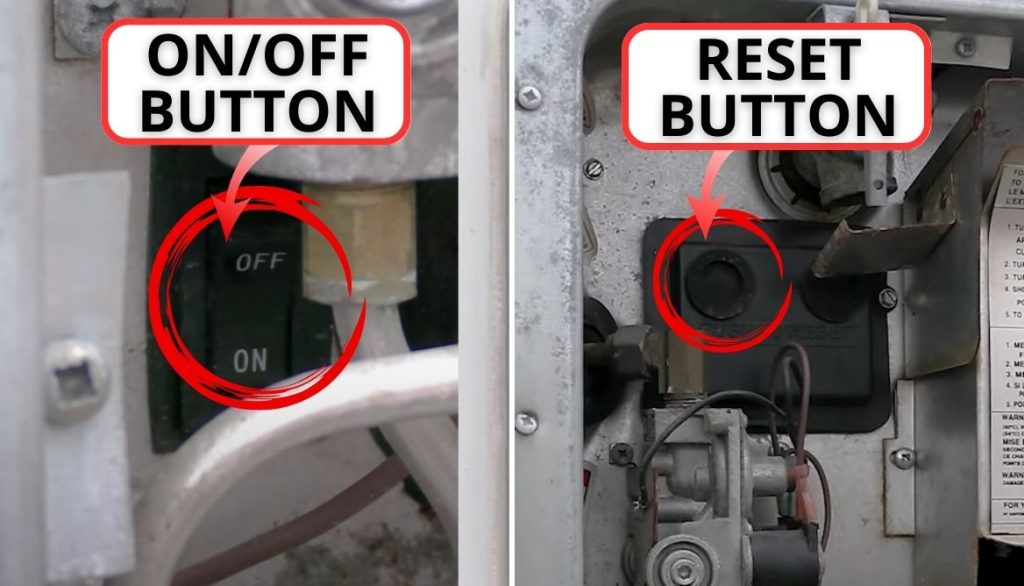
But, don’t worry! We bear the good news as there are other ways to reset them. Below, you’ll find a thorough table outlining various water heater kinds and whether they have reset buttons:
Differences | Atwood | Dometic | Suburban |
Color: | RED | RED | Black |
Location: | Inside the Junction Box | Above the Thermostat | Interior Panel and Juction Box (3 Switches) |
Let’s examine more closely where the reset buttons are located in various RV heater brands:
- Atwood: You’ll need a socket wrench to locate the reset button on an Atwood RV heater. The heater’s connection system has a small cover that may be opened using this tool. A red reset button is inside the junction box located, next to the heating element.
- Dometic: The reset button on Dometic most RV water heaters is hidden behind a metal panel called the water heater thermostat panel. Remove the panel with a screwdriver to have access to it. You may spot the red reset button directly above the panel.
- Suburban: With two reset buttons, one for each power source, the Suburban RV electric water heater model may be operated by electricity or gas. Open the water heater’s internal panel to access these reset buttons. You’ll find three switches inside; the left one controls electric power, the right one controls LP gas, and the final one completely turns off the water heater.
RV Hot Water Heater Reset: An Easy Guide for Resetting Your Unit
Your RV’s hot water heater is essential for a cosy trip. If you encounter any problems, there is no need to fret! Just gather the following items and the simple steps given below:
- The manual for your heater model,
- Flashlight,
- Screwdriver.
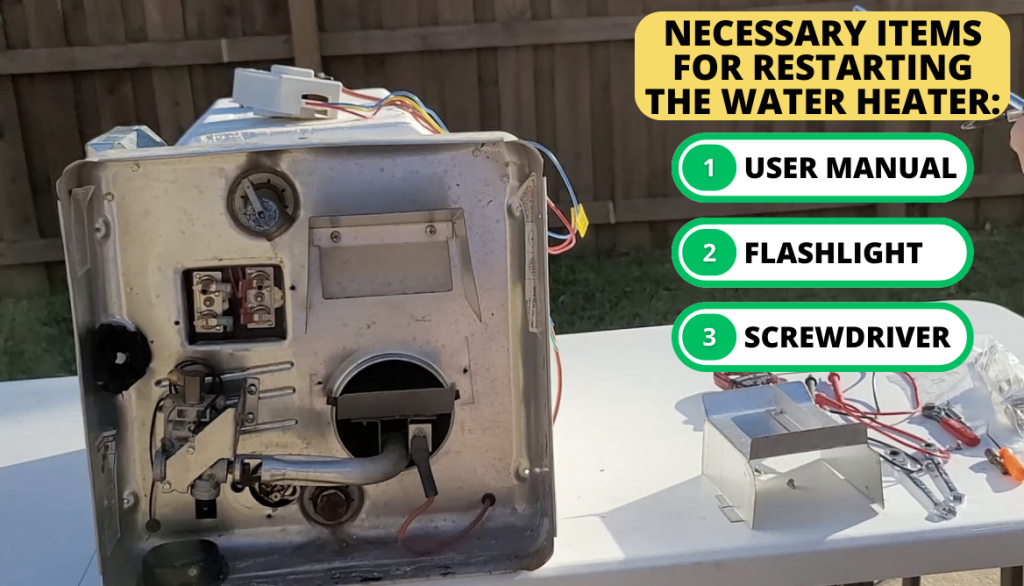
Step 1: Read Through the Water Heater’s Instruction Manual
Consult the water heater manual that came with your RV water heaters to get started. This essential manual offers helpful tips on maintenance and troubleshooting as well as answers for any issues that may occur.
Remember that different water heater models could have different instructions. You can simply locate the handbook online if you don’t have a hard copy. Enter “manual” in the search bar when looking for your specific model of the water heater.
Step 2: Identify Where Your RV Water Heater’s Reset Button is Located
Once you have a grip on basic insights, locate the water heater’s reset button. It’s usually located next to the thermostat in newer versions or at the heater’s base.
For more info about the presence of the reset button, refer to the table above.
Step 3: Turn on the Reset Feature
Once you’ve located the reset button, keep it down for around 30 seconds. This will start the water heater’s reset procedure, fixing any problems that may already be present. If required, carry out this procedure a couple of times to make sure the reset is effective.
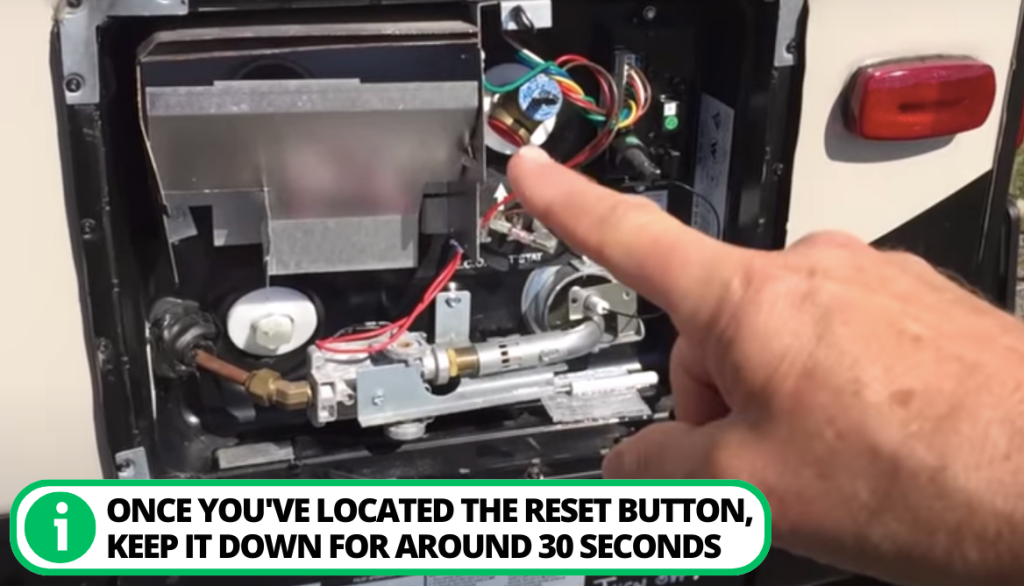
Step 4: Reassemble the Components
After finishing the reset procedure, carefully return all components to their original places. To avoid any inconvenience, ensure that all doors and coverings are securely closed.
4 Frequent Problems Encountered in Water Heaters
Like any other equipment, the hot water heater in your RV can have issues from time to time. Let’s look at some of the most typical problems that RVers have with their heaters and how to fix them:
1. Reduced Lifespan
Due to the frequent use in the RV lifestyle, hot water heaters may have a shorter lifespan than their home equivalents. The continual operation might hasten wear and tear, reducing the device’s longevity:
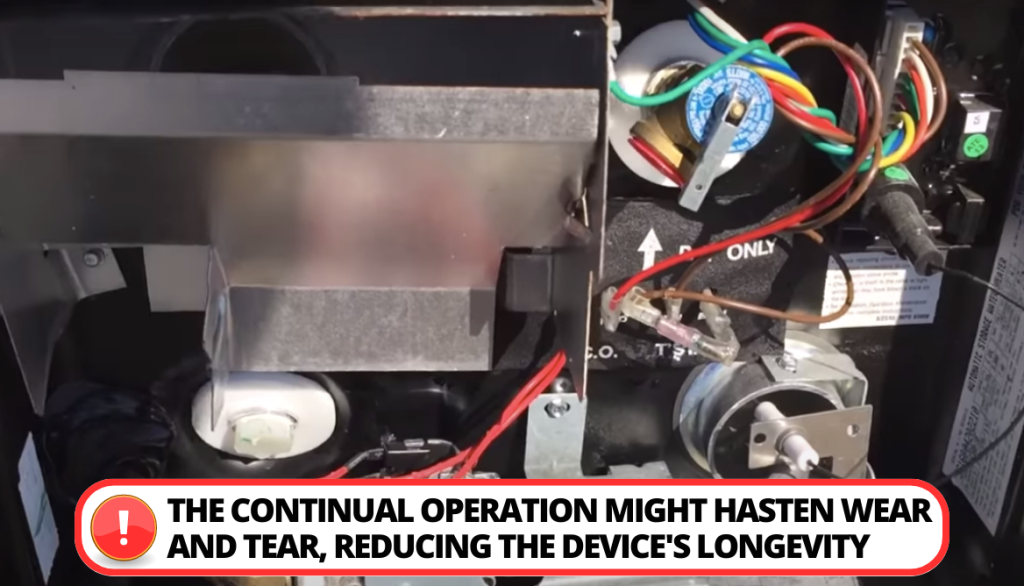
2. Sediment and Rust Build-Up
Skipping necessary maintenance can cause rust and silt to amass inside the heater. This accumulation over time may hinder the healing process and result in faults.
3. Leaks
The high pressure that water heaters must work at might lead to systemic leaks. If ignored, even a small leak has the potential to become a serious issue.
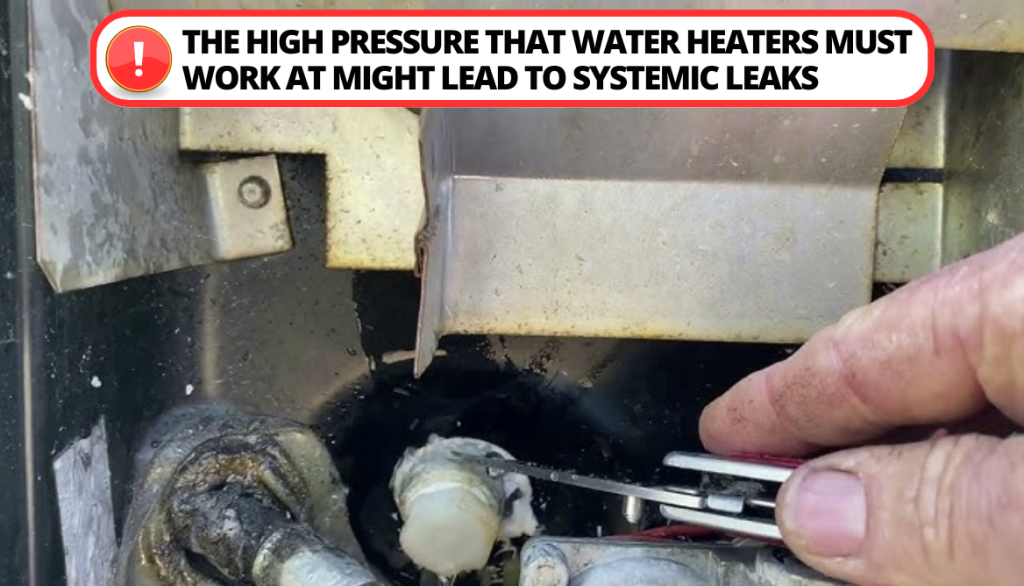
4. Lack of Hot Water
Some RVers may experience problems with their water heaters failing to supply adequate hot water. A broken thermostat or pilot light may be at blame for this.
Moreover, there still might be instances where you are unable to recognize the common issues associated with your RV hot water heater reset button. You can watch this helpful video for much better assistance and understanding.
6 Factors Leading to the Tripping of the RV Water Heater’s Reset Button
A reset button is a practical feature found on modern RVs that solves particular problems. Let’s examine the typical reasons why the reset button on your RV water heater trips:
1. Trouble with Boiling Hot Water
On occasion, your RV’s water heater may continue to heat the water long after it has reached the intended water temperature, resulting in dangerously hot water.
2. Problem with Temperature Control Due to a Faulty Thermostat
The water heater in your RV uses a thermostat to let you control the water’s temperature. When this essential component breaks down, it may result in inappropriate heating and the RV button trips.
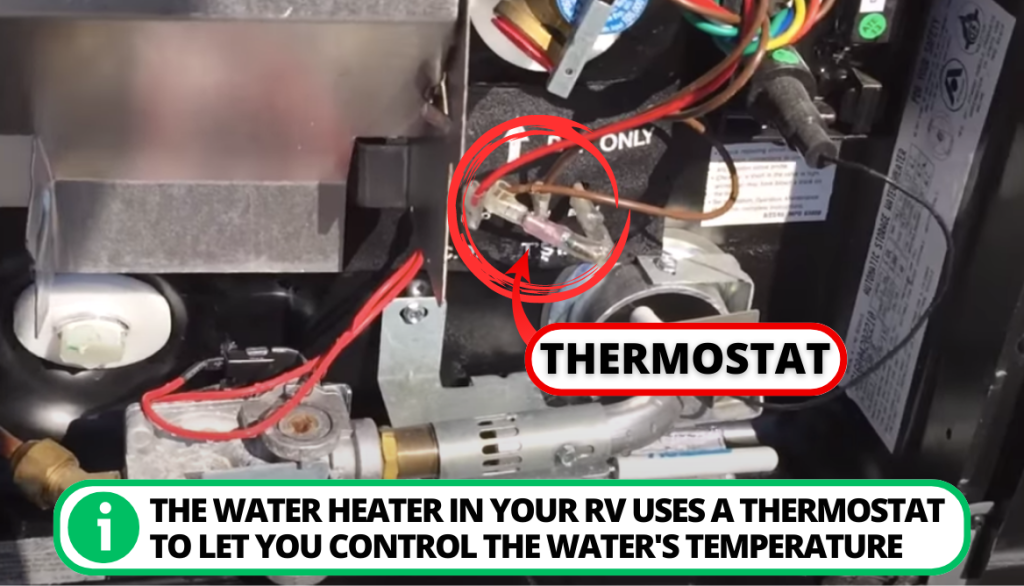
3. Troublesome Energy Cut-Off (ECO)
The energy cut-off (ECO) in your RV water heater is intended to turn the heater off once the target water temperature is attained as a safety measure. However, there are times when the ECO does not work properly due to which water temperature rises and ultimately trips your reset button.
4. Wires Causing Problems
Over time, the connections and wires inside the water heater may deteriorate, leading to issues and potentially explosive sparks. This deterioration may result in a malfunctioning water heater, which would trip the reset button. Further trips will not occur if the issue wires are addressed.
5. Burner or Heating Element Malfunctions
Your RV water heater typically uses gas to heat the water, relying on a burner to accomplish this. The reset button may trip if the burner malfunctions, leaving you without hot water. Pay close attention to any rust stains on the burner since this could be the source of the issue.
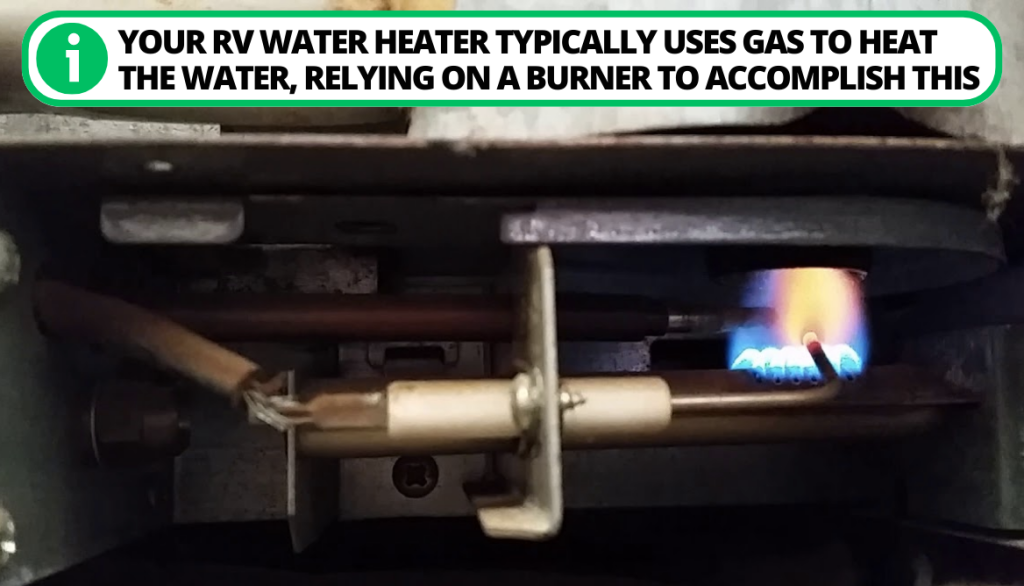
6. Out of Gas
In some circumstances, even after the tank is empty, the RV water heater may falsely believe that there is still gas available to heat the water. Older heaters are more likely to exhibit this. As a result, it makes an unsuccessful attempt to produce hot water, tripping the reset button to alert users to the problem with the cold water output.
Extra Quick Checks
The reset button works like a circuit breaker to prevent accidents and further damage, ensuring your safety and preserving the longevity of your water heater.
- It is advised to refer to the manufacturer’s instructions if you have any questions about how to fix the issue.
- Ensure that your heater has regular maintenance and inspections to lower the likelihood of running across these problems.
5 Considerations Before Putting Money Into An RV Water Heater
Before purchasing an RV water heater, there are several important factors to consider to ensure you make the right choice for your needs. Let’s take a closer look at each of these factors:
1. Capacity and Size
When choosing an RV water heater, you need to think about its capacity and size. Consider the number of people traveling with you and their hot water needs. RV water heaters come in various tank sizes, typically 6 to 10 gallons, and some models even boast larger capacities than this.
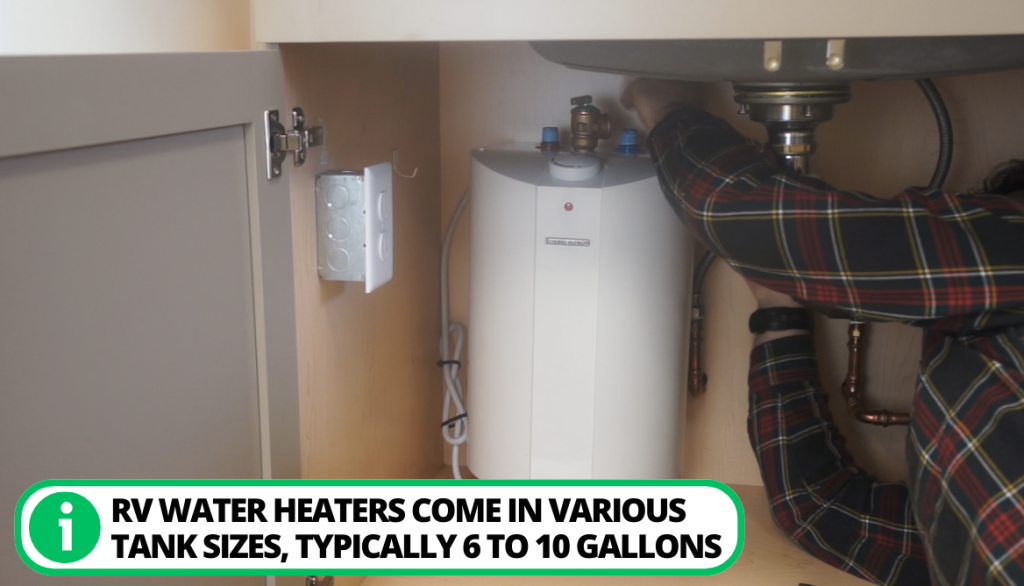
Do select a size that suits your usage requirements while ensuring it fits in the available space in your RV without causing any inconvenience.
2. Fuel Source
The fuel source of the water heater is an essential consideration. RV water heaters can be powered by propane, electricity, or a combination:
- Propane-powered heaters are great for camping in remote areas without electricity hookups since they don’t rely on external power sources.
- Electric water heaters are convenient when you have access to shore power or campsites with electrical hookups.
- Some models offer dual fuel options, allowing you to switch between propane and electricity as needed, giving you more flexibility.
3. Heating Time
Consider the heating time of the water heater you are interested in. Heating time refers to how quickly the water heater can bring water to the desired temperature.
- Faster heating times can be beneficial, especially if you have a busy schedule during your trips or if you want to conserve energy.
- A quick heating water heater will provide you with hot water promptly, enhancing your overall camping experience.
4. Brand Reputation and Reviews
Before making a final decision, it’s a good idea to research different brands and read reviews from other RV owners who have used the water heater models you’re interested in:
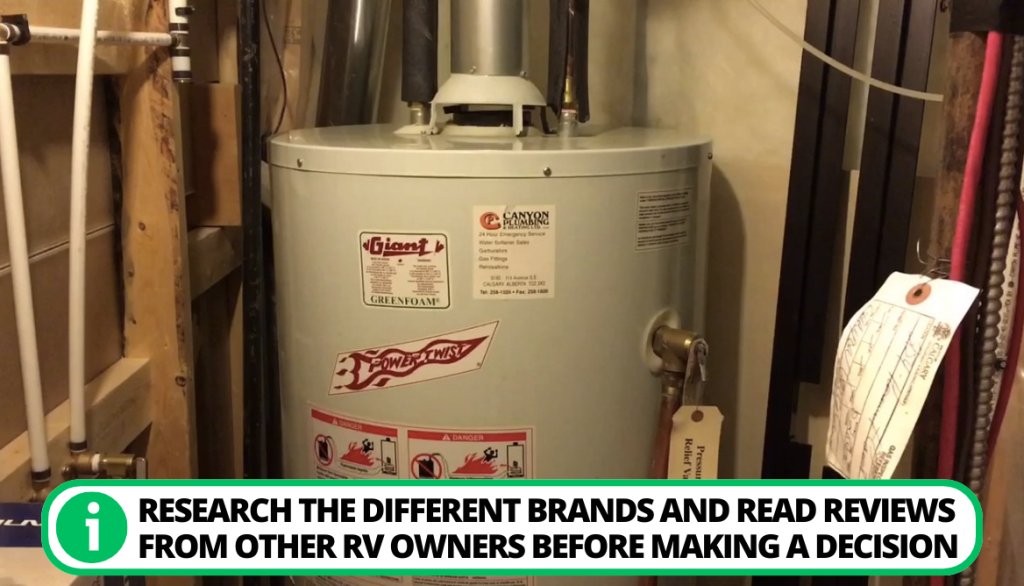
- A reputable brand with positive reviews often indicates a reliable product with good performance and customer satisfaction.
- Gathering information from other users’ experiences can help you make a well-informed choice.
5. Warranty and Support
Always check the warranty period offered by the manufacturer:
- A good warranty can provide you with peace of mind, knowing that you are covered if any issues arise with the water heater.
- Additionally, consider the availability of customer support and service centers.
- Having accessible support and service centers can be beneficial if you encounter any problems with your heater during your travels.
7 Best Handy Maintenance Tips for Your RV Water Heater
Proper maintenance of your RV water heater is crucial for its efficiency and longevity. Follow these essential tips to ensure your water heater functions optimally throughout your adventures:
1. Use a Water Softener
Install a water softener in your RV’s water supply system to reduce mineral content. Soft water helps prevent scale buildup inside the water heater and other plumbing components.
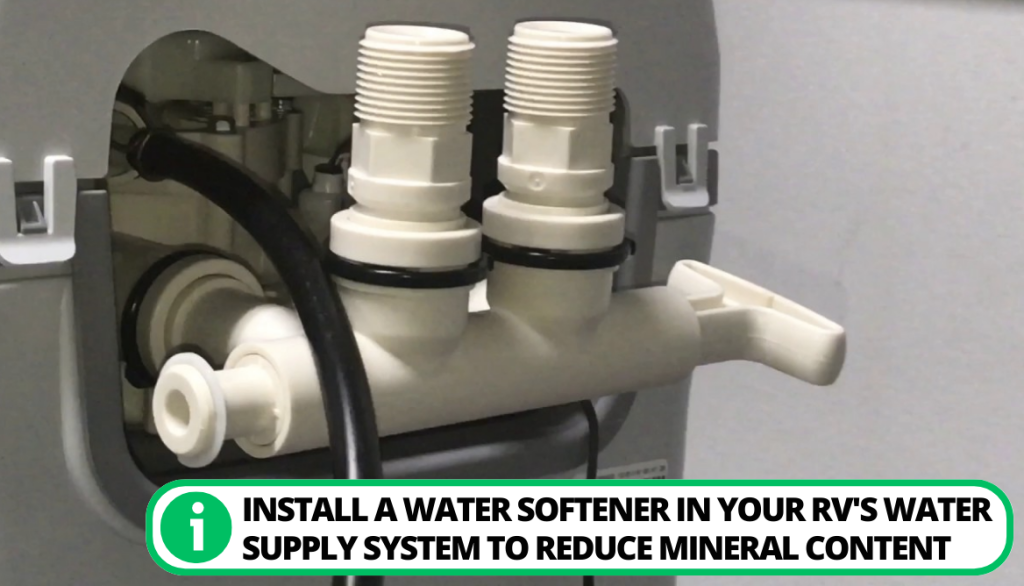
2. Inspect and Replace Seals
Regularly check the water heater’s seals and gaskets for wear and tear. Follow these steps:
- Ensure that seals around the access panel, drain, and pressure relief valve are in good condition.
- Replace any damaged or deteriorated seals promptly to prevent leaks.
3. Clean and Check the Anode Rod
The anode rod is a crucial component that protects the water heater’s tank from rust and corrosion. It is best to do the following:
- Regularly inspect the anode rod to make sure it’s clean and free of corrosion.
- If you notice significant corrosion on the rod, it’s time to replace it with a new one.
By keeping the anode rod in good condition, you enhance its effectiveness in safeguarding the tank.
4. Keep the Exterior Vent Clear
For keeping the exterior vent clear at all times, make sure to do the following:
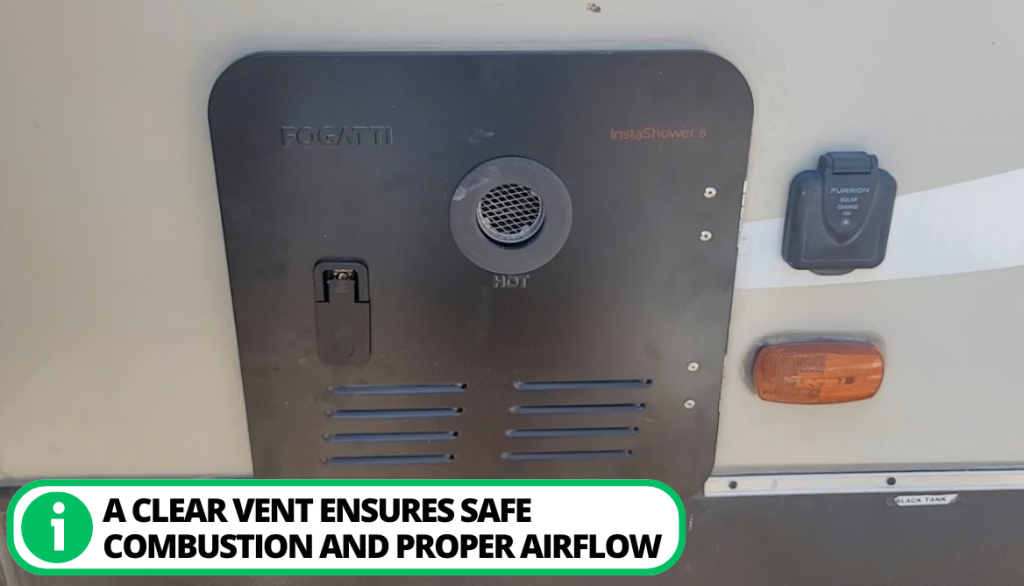
- Inspect the exterior vent of your gas-powered water heater regularly.
- Remove any obstructions, such as leaves, debris, or insect nests, that may hinder proper ventilation.
A clear vent ensures safe combustion and proper airflow.
5. Flush the Water Tank
Over time, sediment can accumulate in the water tank of your RV heater. Here is how you can fix the problem:
- Periodically flushing the hot water tank helps remove this sediment, preventing clogs and improving efficiency.
- Follow the manufacturer’s instructions to learn the proper way to flush your water heater.
6. Winterization
You should follow these things in the winter season:
- Before storing your RV during winter, drain the water heater entirely.
- Turn off the water heater and allow it to cool down.
- Open the drain valve and let all water flow out of the tank.
- Flush the entire water system to ensure no water remains in the pipes or appliances.
- Use RV-safe antifreeze in the plumbing system to prevent freezing and potential damage.
7. Annual Inspections
Annual inspection is a really necessary thing and you should always make sure of the following:

- It’s a wise idea to have your RV water heater professionally inspected at least once a year.
- A qualified technician can thoroughly examine the heater and identify any potential issues.
- This proactive approach allows you to address problems early on. This helps in preventing them from escalating into more serious and costly repairs in the absence of a circuit breaker.
FAQ
How do I reset my hot water heater?
Find a red button on your water heater’s top, usually, and press it to restart it. For 3 to 5 seconds, press and hold it, then release. Turn on the power once more after giving it a moment to reset.
How do I reset my water heater to factory settings?
Find the reset button on your water heater if you need to return it to its default settings. The thermostat or the control panel are common locations. After turning the power off, hold the button for 10 to 15 seconds before turning it back on. Holding the button for a few more seconds, release it. The heater will be restored to its pre-purchase condition.
What does the water heater reset button do?
The water heater reset button is a useful safety feature. If your hot water stops working or the water heater gets too hot, the reset button comes into play. It acts as a safety guard, making sure the heater doesn’t overheat and cause any problems.
How do I know if my water heater needs to be reset?
You can check if your heater needs a reset by checking if the button on your water heater, usually a red one on the top, is glowing or shining, as it indicates the need for a reset.
How long to press the reset button on the water heater?
Press the reset button on your heater for 3 to 5 seconds when you want to restart it. However, it’s a good idea to check the manual or instructions from the manufacturer to know the exact reset procedure.
Conclusion
Simply put, the RV water heater reset button acts as a high-limit safety switch. It can trip due to various reasons, such as problems with temperature control, ECO, or the thermostat.
Regular maintenance, such as inspecting and replacing seals, cleaning the anode rod, and flushing the water tank, is crucial for optimal performance and longevity.
Have your RV heater’s reset button ever tripped? If so, how did you address the issue? Please feel free to share your insights and recommendations in the comments below.

I`m a current Law Enforcement Officer working within the Counterterrorism Bureau in New York State. I have been Camping for over 20 years. My styles of camping include tent, car, truck, van, and RV travel trailer. I have a YouTube channel where I teach all types of camping with an entertaining method: https://youtube.com/@TheSmallsRVAdventures






